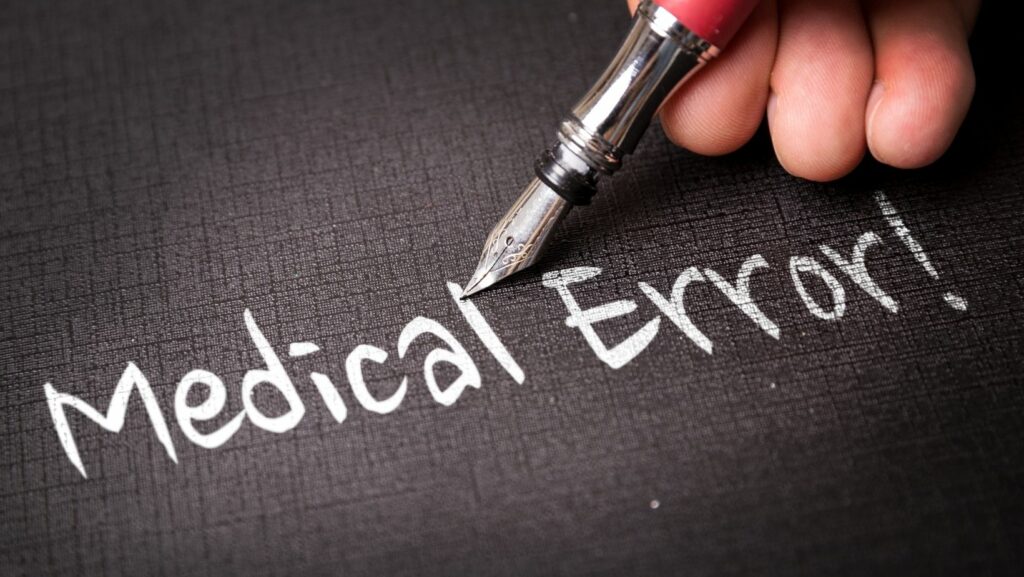In the rapidly evolving field of medicine, errors can sometimes occur, leading to unexpected consequences. Recently, one such medical blunder has garnered significant attention in the news, sparking debates and raising questions about safety protocols in the healthcare sector.
This article delves into the details of the incident, exploring its causes, the fallout, and the lessons that can be gleaned from it. It’s a must-read for anyone interested in healthcare, patient safety, or the broader implications of medical mishaps. Stay tuned as we unpack the story behind the headline, providing a comprehensive view of this recent medical error.
Recent Medical Error That Made the News

The recent medical error, a cause for concern, involves an unfortunate case of misdiagnosis. A patient, suffering from severe abdominal pain was treated for appendicitis, but post-surgery revelations indicated a ruptured ovarian cyst, a condition misread as appendicitis in the initial examination.
Authorities reported that the error stemmed from overreliance on technology and neglected traditional diagnostic methods. This slip-up led to an unnecessary surgery, inflicting psychological distress and complications on the patient, while also staining the hospital’s reputation. From this incident, it’s clear that lapses in procedure adherence and the balance between technology and traditional methods warrant a serious look.
The Impact of the Medical Error
The medical error’s effects reach far beyond the immediate physical and psychological distress suffered by the patient. It created a ripple of implications in the healthcare community, leading to significant reputation damage for the hospital.

Another dimension of the impact is evident in the economic sphere. The hospital faced heavy financial setbacks, not only due to lawsuits from the affected patient but also potential loss of patronage as a result of the damaged reputation. It’s vital to note that this incident also prompted an urgently needed introspection among healthcare professionals around the world.
Overall, the medical blunder had lasting and profound impacts on stakeholders ranging from individual patients, the hospital as an institution, to the wider healthcare industry. Each learned a crucial lesson about the irreversible consequences of medical oversights. The incident serves as a stark reminder of the responsibilities healthcare professionals bear and the risks involved, emphasizing the imperative of maintaining an error-free environment.
Preventative Measures and Best Practices
In order to circumvent such medical errors, there are several key strategies worth confirming. Implementing standard operating procedures in diagnosing ailments can help strike the right balance between relying on technology and human expertise. Inherently, with medical professionals exercising keen judgement, they’ll diminish the likelihood of over-reliance on technology.
Secondly, establishing robust training programs can equip staff with the necessary skills to use advanced medical technologies responsibly. For this approach to be successful, grammatically detailed instructions must accompany the training. As the case of the misdiagnosis highlighted, machines are not infallible, thus individual discretion always matters.

Lastly, transparency and accountable systems play a pivotal role in preventing repeat mistakes. Having a system to trace errors fosters an environment of learning and improvement, ultimately reducing medical mistakes. This proactive culture nurtures responsibility, enhancing the credibility and trustworthiness of any healthcare facility.
Legal and Ethical Considerations
The recent medical error that’s made headlines underscores the critical need for legal and ethical vigilance in healthcare. It’s a stark reminder of the potential fallout from overdependence on technology. It’s not just about financial losses or reputation damage – it’s about the trust patients place in healthcare professionals and institutions. To ensure patient safety, healthcare facilities must strike a balance between technology and human expertise. They’ve got to invest in robust training programs and establish accountable systems. It’s a call to foster a culture of continuous learning and improvement. This incident serves as a wake-up call to the healthcare industry, reminding us all that adherence to procedures and maintaining an error-free environment isn’t just a standard – it’s an ethical obligation.
